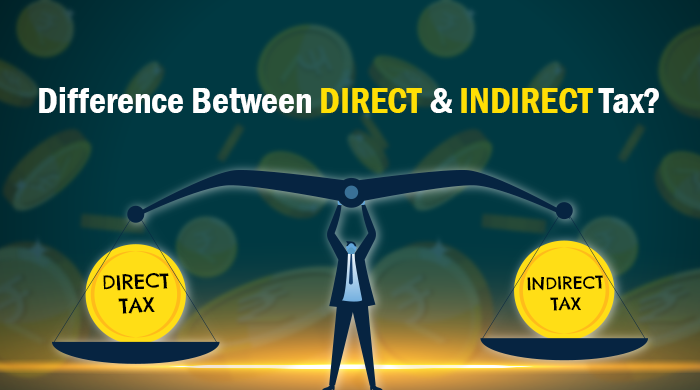Difference Between Direct And Indirect Tax?

Taxation is a crucial aspect of a country’s economy, funding public services, infrastructure development, and government initiatives. There are two main categories: direct and indirect taxes. Understanding these distinctions is essential for individuals to navigate financial obligations and gain insights into the economic mechanisms underlying a nation’s fiscal policies. This exploration will explore the fundamental disparities between direct and indirect taxes, their implications, and tkey differences on individuals and the economy as a whole.
Direct Taxes
Direct taxes are taxes imposed directly on individuals or properties, such as income, property, and personal property. They cannot be passed on to another person or entity, and are computed based on the taxpayer’s ability to pay. Higher taxpayer capability leads to higher taxes. Direct taxes are crucial revenue sources for governments, as they are a direct payment to the taxing entity.
Types of direct taxes
* Income tax: This is a tax imposed on an individual’s income. It is usually filed annually, but deductions can be done on a monthly basis.
* Property tax: This is a tax imposed on the value of real property, such as land and buildings.
* Capital gains tax: This is a tax imposed on the profit made from the sale of an asset, such as stocks or real estate.
* Estate tax: This is a tax imposed on the transfer of property after a person’s death.
* Gift tax: This is a tax imposed on the transfer of property as a gift.
* Wealth tax: This is a tax imposed on the total value of a person’s assets, including property, investments, and savings.
Indirect Taxes
Indirect taxes are fees imposed equally on taxpayers but ultimately paid by another person or entity. They are commonly used by governments to generate revenue, as they are included in the cost of goods and services and can be passed on to another entity or individual. Examples of indirect taxes include excise tax, value-added tax (VAT), and service tax.
Types of indirect taxes
* Sales taxes: These are taxes imposed on the sale of goods and services at the point of purchase.
* Value-added tax (VAT): This is a tax imposed on the value added at each stage of production and distribution of goods and services.
* Excise tax: This is a tax imposed on specific goods, such as fuel, liquor, and cigarettes.
* Customs fees: These are taxes imposed on goods imported or exported between countries.
Key Differences Between Direct and Indirect Taxes
Direct taxes and indirect taxes are two types of taxes that differ in several ways. Here are the key differences between direct and indirect taxes:
A. Taxpayer Responsibility
* Direct taxes: Paid by the taxpayer directly to the government.
* Indirect taxes: Collected by businesses and paid indirectly by consumers.
Direct taxes are imposed on individuals or property, while indirect taxes are on goods and services. Direct taxes cannot be shifted to another entity, while indirect taxes can be passed on to consumers by manufacturers or retailers as part of the purchase price.
B. Progressivity
* Direct taxes: Typically progressive, based on income/wealth levels.
* Indirect taxes: Regressive, as they impact lower-income individuals more.
Direct taxes, like income tax, are progressive, increasing as the taxpayer’s income increases. Indirect taxes, like sales tax, are regressive, affecting lower-income individuals more due to their higher spending on goods and services.
C. Economic Impact
* Direct taxes: Can influence behavior and incentives to work/save.
* Indirect taxes: Affect consumption patterns and demand for goods/services.
Direct taxes impact behavior and incentives to work and save, while indirect taxes affect consumption patterns and demand for goods and services. Taxpayers may adjust their behavior to reduce tax liability. Consumers may reduce purchases of higher-taxed goods and services.
D. Administration and Compliance
* Direct taxes: More complex administration due to income assessment.
* Indirect taxes: Easier to administer, but may involve evasion/avoidance.
Direct taxes are more complex due to income assessment, while indirect taxes are easier but may involve evasion or avoidance. Direct taxes require taxpayers to file returns and provide income information, while indirect taxes are collected by businesses and remitted to the government.
Understanding the distinction between direct and indirect taxes is crucial in the realm of taxation. Direct taxes are levied on individuals’ income and wealth, while indirect taxes are imposed on goods and services. Both tax types hold significant roles in generating government revenue and funding public services. However, achieving a balanced taxation system that promotes economic growth and social welfare remains pivotal. As we consider the complexities of taxation, it becomes evident that seeking expert guidance from Taxation and Consultancy Services in Kochi, Kerala can provide valuable insights for navigating this intricate landscape effectively.






